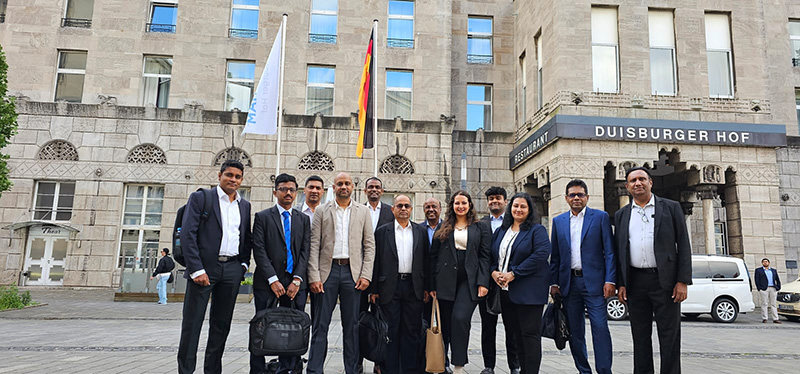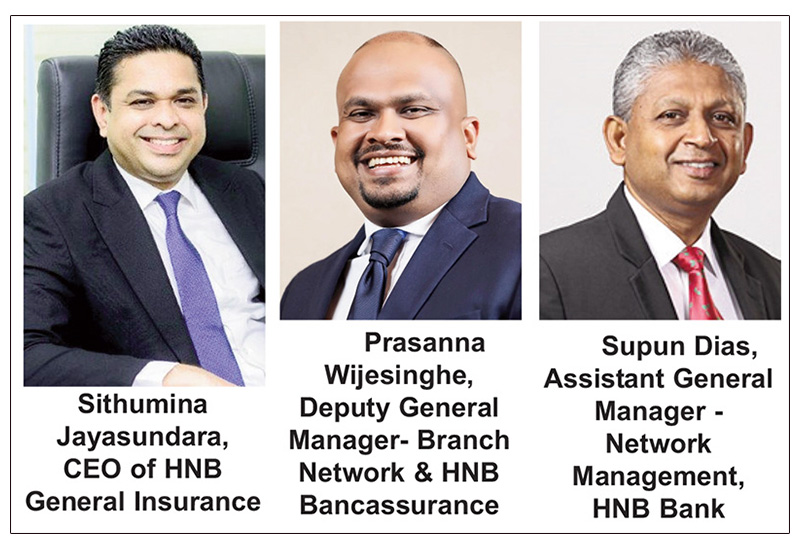Business
The X-Press Pearl Disaster: From Flames to Prevention

By Ruwan Samaraweera
Sri Lanka’s ecological disaster related to the MV X-Press Pearl, a container ship carrying hazardous chemicals that caught fire off its coast on 20th May 2021, is back in the news as the country attempts to claim damages. The ecological disaster washed up tons of plastic pellets and other pollutants on the country’s beaches and harmed its marine ecosystem.
It is a stark reminder of the risks associated with transporting hazardous materials and the urgent need for governments and companies to take proactive measures to prevent such disasters in the future. This blog revisits the environmental impact of the X-Press Pearl disaster and discusses how Sri Lanka can use the Sendai Framework for Disaster Risk Reduction (SFDRR) to develop strategies and policies to prevent similar disasters from happening near its shores again.
The Environmental and Economic Impacts of X-Press Pearl
The X-Press Pearl disaster has had a devastating impact on Sri Lanka’s environment and its citizens. The Marine Environment Protection Authority (MEPA) reported an oil slick of an approximate area of 0.51 km2 with a length of 4.3 km around the wreck. According to the International Pollutants Elimination Network, the ship’s cargo included billions of plastic pellets (microplastics used to produce plastic) which have washed up on the shore, causing damage to the country’s marine ecosystem, tourism industry and its reputation as an eco-tourism destination. According to the International Maritime Hazardous Goods Regulation (IMDG regulation), an analysis of the cargo manifest revealed that at least 81 of the 1,486 containers aboard the MV X-Press were transporting 15 distinct categories of hazardous materials, including 25 tons of nitric acid. While the full extent of the damage is yet to be determined by the MEPA, the insurance company for the ship has already compensated the Sri Lankan government to the tune of USD 7.85 million.
Beyond the monetary valuation, the disaster has severely impacted Sri Lanka’s fishing industry, with over 20,000 fishing families and approximately 16,000 fishermen affected. Additionally, the spillage of hazardous chemicals into the sea has killed over 300 marine animals, including turtles, dolphins, and whales.
The disaster has also raised concerns about the impact of hazardous material transportation on the environment and public safety, highlighting the need for more stringent regulations, especially in densely populated areas. It also revealed institutional and capacity constraints and a lack of training in handling such emergencies, which should be addressed to prevent such disasters. This is where the SFDRR comes into play, providing a comprehensive framework to address these issues and build resilience in the face of such catastrophes.
The Way Forward: Preventing Future Maritime Disasters
The X-Press Pearl disaster is a wake-up call for governments and companies worldwide to take proactive measures to prevent similar disasters in the future. Since its inception in 2015, the SFDRR has become widely recognised for managing diverse disasters worldwide.
The Sendai Framework
Even though there are various frameworks and policies related to disaster risk reduction at the national level in Sri Lanka, including the National Disaster Management Plan, they were inadequate to address the X-Press Pearl disaster timely and effectively. Other countries use numerous measures like response and containment techniques, preparedness and planning, regulation and enforcement, international cooperation and collaboration. The SDFRR combines these individual efforts and brings them under an umbrella framework.
Hence, it offers a comprehensive framework that countries like Sri Lanka can adopt to address the challenges associated with hazardous material transportation and other maritime disaster risks. Moreover, while the adoption of the SFDRR is novel for preventing maritime disasters, it has been widely adopted by many countries, including but not limited to Japan (climate change, Tsunami, Fukushima nuclear disaster, etc.), Australia (wildfires), and Nepal (earthquakes). Therefore, the X-Press Pearl maritime disaster emphasises the potential for harnessing the SFDRR’s wide range of applicability to prevent future similar disasters in Sri Lanka.
Understanding the risks
The first step in preventing such disasters is understanding the risks of shipping hazardous materials through Sri Lanka’s waters. Sri Lanka did not have a proper contingency plan in place to deal with a disaster of this scale. Furthermore, the risk assessment conducted prior to granting permission for the vessel to enter Sri Lankan waters did not adequately consider the potential impact of a disaster. Thus, as mentioned in the SFDRR, Sri Lanka should conduct a risk assessment concerning the potential impact of such disasters on the environment, the economy, and public health.
Strengthening regulations
The SFDRR emphasises the need to strengthen regulations and laws to prevent disasters. For instance, the Draft National Transport Policy of 2009 highlights the safer transportation of hazardous material in all modes, yet the cabinet has not approved this.
Therefore, it is imperative that Sri Lanka reviews its existing laws and regulations, such as the National Environmental Act No. 47 of 1980, the Marine Pollution Prevention Act No. 35 of 2008, and the Dangerous Goods (Transportation) Regulations governing the transportation of hazardous materials and makes necessary amendments to ensure compliance with international standards.
Building capacity
The SFDRR encourages increasing preparedness at all echelons of society. During the X-Press Pearl disaster, emergency responders lacked the necessary equipment and training to respond to the disaster effectively. Additionally, poor coordination between different agencies hampered the response effort. To address these issues, training programmes in collaboration with the Sri Lanka Navy and MEPA could be conducted for essential stakeholders such as shipping companies, port authorities, and emergency responders. These programmes could provide them with the necessary knowledge and skills to prevent and effectively respond to such catastrophes.
Promoting public awareness
The framework stresses the need to educate the public and raise awareness to prevent disasters. However, in the recent disaster, the lack of public awareness about the risks associated with transporting hazardous materials made it difficult to generate support for preventive measures. Therefore, the government, private sector, non-governmental organisations and other relevant stakeholders are responsible for informing the public about the risks of transporting hazardous commodities and the importance of adopting safe shipping practices.
Collaboration and partnerships
The framework encourages cooperation and partnership amongst all parties involved in disaster management. However, Sri Lanka did not collaborate effectively with other countries or international organisations to prevent the disaster. For example, there was no information sharing about the vessel’s previous safety record, which could have alerted Sri Lanka to potential risks. To avoid similar events in the future, Sri Lanka could collaborate with other nations (India and other South Asian countries), international organisations (such as the International Maritime Organisation), and shipping companies.
The disaster has also brought attention to the need for sustainable shipping practices, such as using alternative fuels and more eco-friendly packing materials.Hence, by adopting the Sendai Framework, Sri Lanka can develop an effective approach to prevent similar disasters in the future through proactive measures to protect the environment, public health, and the economy.
Link to blog: https://www.ips.lk/talkingeconomics/2023/05/03/the-x-press-pearl-disaster-from-flames-to-prevention/
Ruwan Samaraweera is a Research Officer at IPS with a background in entrepreneurial agriculture. He holds a Bachelor’s in Export Agriculture from Uva Wellassa University of Sri Lanka. His research interests are environmental economics, agricultural economics, macroeconomic policy and planning, labour and migration, and poverty and development policy. (Talk to Ruwan – ruwan@ips.lk)
Business
AHK Sri Lanka champions first-ever Sri Lankan delegation at Drupa 2024

The Delegation of German Industry and Commerce in Sri Lanka (AHK Sri Lanka) proudly facilitated the first-ever Sri Lankan delegation’s participation at Drupa 2024, the world’s largest trade fair for the printing industry and technology. Held after an eight-year hiatus, Drupa 2024 was a landmark event, marking significant advancements and opportunities in the global printing industry.
AHK Sri Lanka played a pivotal role in organising and supporting the delegation, which comprised 17 members from the Sri Lanka Association for Printers (SLAP), representing eight companies from the commercial, newspaper, stationery printing, and packaging industries. This pioneering effort by AHK Sri Lanka not only showcased the diverse capabilities of Sri Lanka’s printing sector but also facilitated vital bilateral discussions with key stakeholders from the German printing industry.
Business
Unveiling Ayugiri: Browns Hotels & Resorts sets the stage for a new era in luxury Ayurveda Wellness

In a captivating reimagining of luxury wellness tourism, Browns Hotels & Resorts proudly unveiled the exquisite Ayugiri Ayurveda Wellness Resort Sigiriya. This momentous occasion, celebrated amidst a vibrant and serene grand opening on the 6th of June, heralds a new chapter in the Ayurveda wellness tourism landscape in Sri Lanka. Nestled amidst 54 acres of unspoiled natural splendour, Ayugiri features 22 exclusive suites and stands out as the only luxury Ayurveda wellness resort in the country offering plunge pools in every room, rendering it truly one-of-a-kind.
The grand opening of Ayugiri Ayurveda Wellness Resort was an enchanting event, where guests were captivated by the melodies of flutists and violinists resonating through Sigiriya’s lush landscapes. As traditional drummers and dancers infused the air with vibrant energy, Browns Hotels & Resorts’ CEO, Eksath Wijeratne, Kotaro Katsuki, Acting Ambassador for the Embassy of Japan and General Manager, Buwaneka Bandara, unveiled the resort’s new logo, marking a significant moment witnessed by distinguished guests from the French Embassy, Ayurveda and wellness enthusiasts along with officials from the Sigiriya area, LOLC Holdings and Browns Group.
“Our strategic expansion into wellness tourism with Ayugiri Ayurveda Wellness Resort Sigiriya symbolises a significant milestone for Browns Hotels & Resorts. Wellness tourism has consistently outperformed the overall tourism industry for over a decade, reflecting a growing global interest in travel that goes beyond leisure to offer rejuvenation and holistic well-being. By integrating the timeless wisdom of Ayurveda with modern luxury, we aim to set a new standard in luxury wellness tourism in Sri Lanka. Whether your goal is prevention, healing, or a deeper connection to inner harmony, Ayugiri offers a sanctuary for holistic well-being” stated Eksath Wijeratne.
Ayugiri encapsulates the essence of life, inspired by the lotus flower held by the graceful queens of the infamous Sigiriya frescoes. Just as the lotus emerges from the murky depths, untainted and serene,
Ayugiri invites guests on a journey of purity and rejuvenation, harmonised with a balance of mind, body and spirit, the essence of nature, echoes of culture and the wisdom of ancient Ayurvedic healing.
Business
HNB General Insurance recognized as Best General Bancassurance Provider in Sri Lanka 2024

HNB General Insurance, one of Sri Lanka’s leading general insurance providers, has been honored as the Best General Bancassurance Provider in Sri Lanka 2024 by the prestigious Global Banking and Finance Review – UK.
The esteemed accolade underscores HNB General Insurance’s unwavering commitment to excellence and its outstanding performance in the field of bancassurance. Through dedication and hard work, the HNB General Insurance team has continuously endeavored to deliver innovative insurance solutions, cultivate strong relationships with banking partners, and provide unparalleled service to customers nationwide. This recognition is a testament to the team’s dedication and relentless pursuit of excellence in the bancassurance business.
“We are honored to receive this prestigious award, which reflects our team’s tireless efforts and dedication to delivering value-added insurance solutions and exceptional service through our bancassurance partnerships,” said Sithumina Jayasundara, CEO of HNB General Insurance. “This recognition reaffirms our position as a trusted insurance provider in Sri Lanka and motivates us to continue striving for excellence in serving our customers and communities.”












